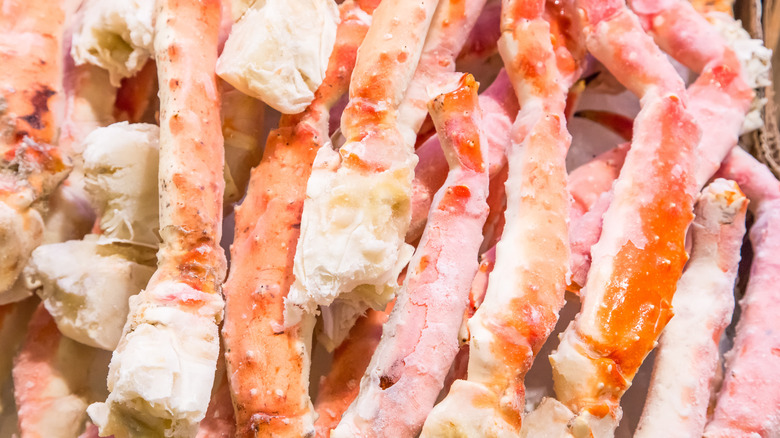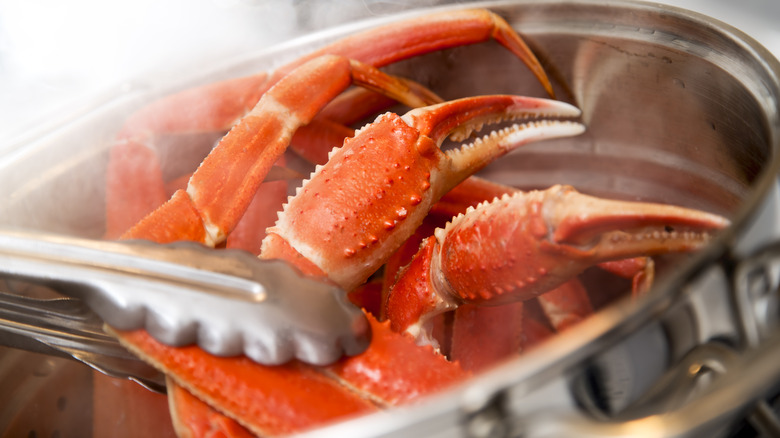How To Thaw Frozen Crab Legs For The Best Results
Many seafood devotees love the idea of crab legs fresh from the waters of Alaska, the Atlantic Coast, or the Gulf of Mexico. While cooking live crabs is a culinary ideal, it's not always a reality given the limited proximity to oceans and strict seasonal crabbing limits. Fresh-frozen crab legs, especially when they're frozen onboard the boat just minutes after the catch, are an excellent option.
Regardless of where you purchase your crab, there's a good chance the "fresh" crab legs sitting on display have been previously frozen at some point. They're likely to have been precooked to preserve flavor and texture before the crab meat begins to deteriorate. So you may as well buy them frozen and then defrost them yourself just before diving into your crab-eating extravaganza.
When the day approaches for reheating your crab legs, there are some options for defrosting them. Whether you'll be boiling, steaming, baking, or grilling, thawing is always better than cooking them straight from the freezer, since the crab legs will cook more evenly and more quickly. Ideally, you have time to thaw them for 8 to 10 hours or overnight in the refrigerator, as this keeps them consistently cool enough to avoid bacteria accumulation. But if time is short, immersing them in cool water works as well.
Thawing crab legs for ultimate enjoyment
Many seafood companies sell frozen crab legs in a "boat to table" situation, using freezer trucks to deliver freshly cooked, then frozen, crab catches to local stores or straight to your doorstep. That's the ideal situation, meaning you'll be starting with some of the freshest crab legs commercially available.
However, you still want to minimize the time from freezer to cooking, as crab quality declines the longer it's exposed to air. When thawing inside a refrigerator, at least that air is cold. The FDA specifies that seafood should be kept in refrigerated spaces of 40 degrees Fahrenheit or below. If the crab comes in vacuum-sealed packaging, remove it before thawing, to avoid a buildup of bacteria that proliferate in low-oxygen spaces.
If you're in a hurry with little time for defrosting, it's possible to cook them frozen. Just note the potential for unevenly cooked crab meat, and at least make sure the entire legs are fully immersed in boiling water or in the steamer pot. If grilling, place them away from direct flames for consistent heat exposure. Cooking times are similar for boiling frozen crab legs compared to thawed: Plan for about 6 to 8 minutes per pound.
A better option is to quick-thaw the crab legs under cool running water until exterior ice dissipates and the shells become more pliable. Alternatively, fully immerse them in a bowl of cool water for about half an hour, replacing with fresh cool water every few minutes.

